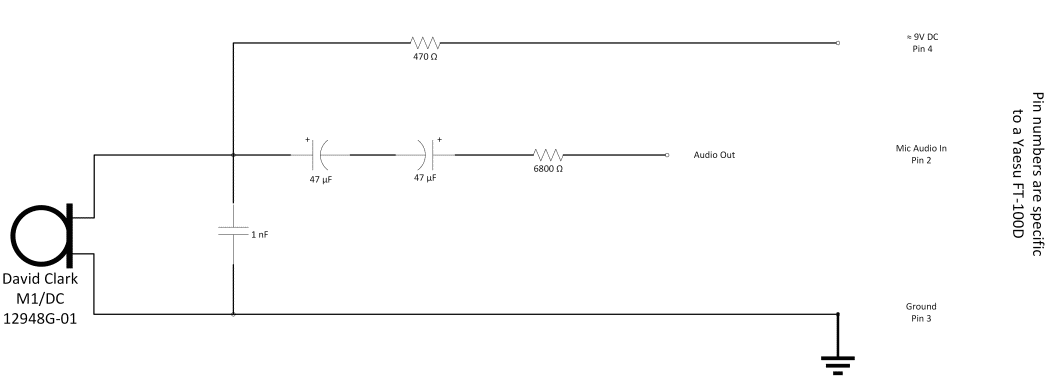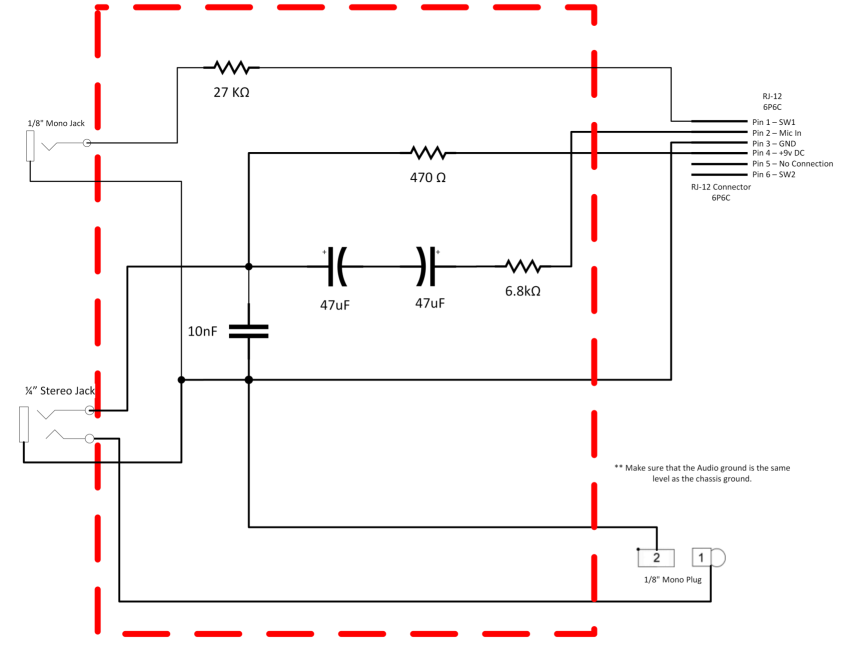Aviation Headsets in Amateur Radio
I was able to pick up a David Clark H3340 headset from a local HAM. They can often be found on E-Bay as well. My headset did not come with any sort of interface box. These Headsets provide wonderful isolation from ambient background noise (depending on the frequency, up to 40dB). The M1/DC microphone is not super sensitive - it requires some fairly close talking, but it also keeps background sounds from being picked up.
The M1/DC microphone needs to be biased. Most Amateur Radio's provide a small DC voltage. If yours does not, you can use a 9 volt battery, or provide a DC voltage from another source. Anything over 6 volts should be sufficient. This is the circuit that I am using. Values are based on a 9 volt supply.

Resistors are ¼ watt. Values don't seem to be super specific. If your input voltage is significantly different than mine (9v) you may need to experiment. I built mine on a small piece of pre-etched prototyping board. Parts list:
- 1 x 470 Ω resistor
- 1 x 6800 Ω resistor
- 1 x 1 nF ceramic capacitor
- 2 x 47 µF capacitor
In order to actually use the radio with the headset, I built an interface box that provides an asynchronous audio path, and Push to Talk (PTT) functionality. The Yaesu FT-100D has an RJ12 (6P6C) jack for the mic & PTT functionality, and audio is taken from the rear ⅛" headphone jack.

Here's the completed unit:

Relevant links:
David Clark H3340 Headset Schematic (Locally Cached copy)
Yaesu MH-36 Schematic (Locally Cached copy) (Use the 27 kΩ value, and not the 'corrected' value)